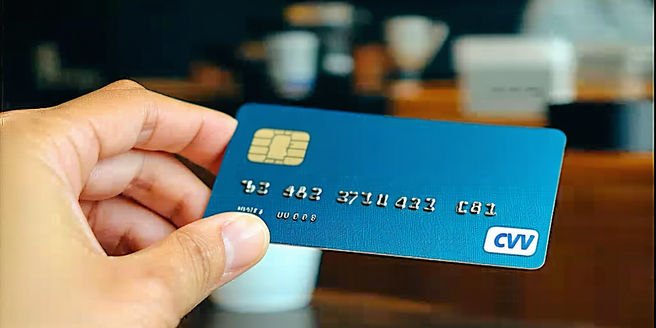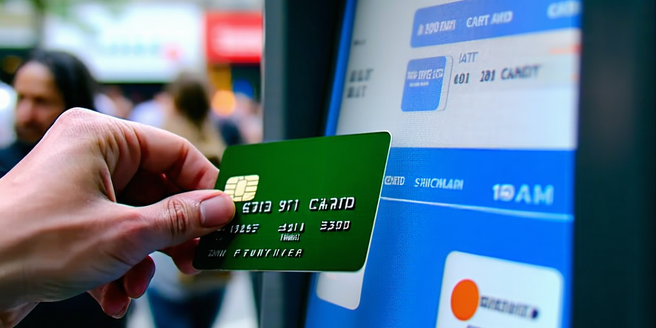Understanding the Basics of Credit Card Security
| Feature | Description | Purpose |
| Chip Technology | Embedded microchip for encrypted transaction data. | Increases security and reduces fraud. |
| CVV Number | 3-4 digit code on the back of the card. | Prevents unauthorized use. |
| Two-Factor Authentication | Verifies user identity through additional step. | Enhances account security. |
| Biometric Verification | Uses fingerprints or facial recognition. | Provides personal and strict security. |
| Real-Time Alerts | Notifies users of card activities instantly. | Enables swift action against fraud. |
| Tokenization | Replaces sensitive data with unique tokens. | Minimizes data exposure. |
How Chip Technology Enhances Card Safety
In the ever-evolving landscape of digital finance, chip technology has significantly bolstered card security, providing consumers with greater peace of mind during transactions. Unlike traditional magnetic stripe cards, chip cards, also known as EMV (Europay, MasterCard, and Visa) cards, incorporate microprocessor chips that encrypt transaction data uniquely for every purchase. This dynamic encryption makes it exponentially more challenging for fraudsters to replicate or misuse card details if intercepted.
Moreover, the use of chips mitigates the risk of card cloning, a common issue associated with magnetic stripes. Each time a chip card is used, the chip generates a one-time-use code that is essential for validating the transaction, thereby thwarting attempts at unauthorized duplications. As contactless payments become the norm, chip technology’s integration ensures that even tapping your card at a terminal doesn’t compromise security. This technological breakthrough underscores the ongoing commitment of the financial industry to safeguard consumer transactions.
The Role of CVV Codes in Preventing Fraud
In today’s digital age, where online shopping and digital transactions have become the norm, the security of your financial information is more critical than ever. One of the unsung heroes in the fight against credit card fraud is the Card Verification Value (CVV) code. This small but mighty three or four-digit number, usually found on the back of your credit or debit card, plays a crucial role in preventing unauthorized transactions. The CVV code acts as a security layer that ensures the person making an online purchase has physical possession of the card. Unlike credit card numbers, the CVV is not stored during processing, meaning even if a fraudster gains access to your card number, they cannot complete a transaction without the CVV. This simple yet effective measure significantly reduces the risk of fraud and enhances consumer confidence in e-commerce platforms.
Two-Factor Authentication Measures for Cards
In recent years, ensuring the security of financial transactions has become more crucial than ever, prompting the adoption of Two-Factor Authentication (2FA) measures for cards. This added layer of security provides cardholders with peace of mind by requiring two forms of verification before a transaction can be completed. Typically, this involves a combination of something you know, like a PIN or password, and something you have, such as your smartphone or a biometric identifier like a fingerprint. When making a purchase online or at a point-of-sale terminal, the 2FA process ensures that even if someone else has access to your card’s information, they cannot complete a transaction without the second verification factor. Financial institutions are rapidly adopting these measures not only to protect their customers but also to enhance trust and reduce fraud, fostering a more secure economic environment.
Biometric Security: A New Era for Card Protection
In an age where digital transactions dominate the financial landscape, the integration of biometric security within card protection heralds a revolutionary shift. As traditional passwords and PIN codes increasingly seem vulnerable to sophisticated cyber threats, biometrics—leveraging unique human traits such as fingerprints, facial recognition, or even iris patterns—offer a robust alternative. These biologically unique identifiers significantly mitigate the risks of unauthorized access, elevating the security standards for financial transactions. Unlike easily compromised traditional methods, biometric data is inherently more secure, as it cannot be easily replicated or stolen. This new frontier not only enhances the consumer’s peace of mind but also aligns with the growing demand for seamless and rapid digital interactions. Moreover, the integration of biometric security into card protection systems further simplifies the user experience by eliminating the need to remember complex passwords, thus paving the way for a more secure and user-friendly future.
Real-Time Alerts and Notifications for Users
In today’s fast-paced digital world, staying updated in real-time is no longer a luxury but a necessity. Real-time alerts and notifications play a crucial role in keeping users informed and engaged, offering instant updates on everything from financial transactions to social media interactions. These timely alerts enhance user experience by providing pertinent information at the right moment, empowering users to act swiftly and make informed decisions. For businesses, they are a powerful tool for improving customer satisfaction and fostering loyalty. Whether it’s a security breach alert, a weather warning, or a reminder for an upcoming appointment, real-time notifications ensure users are always a step ahead. Moreover, with advancements in artificial intelligence, these alerts are becoming increasingly personalized, ensuring relevance and reducing noise. This not only facilitates better user engagement but also streamlines communication, making it more effective and efficient.
Tokenization: Minimizing Risk in Transactions
Tokenization is rapidly becoming a cornerstone in securing financial transactions and minimizing risk. By replacing sensitive data, such as credit card numbers and personal identifiers, with non-sensitive equivalents known as tokens, businesses can significantly reduce the chances of cyberattacks. These tokens hold no exploitable value, making them useless to potential cyber thieves if intercepted. This process not only safeguards customer data but also helps businesses comply with stringent data protection regulations like GDPR and PCI DSS, as tokenized data fall outside the purview of these regulations when properly implemented. Additionally, tokenization reduces the scope of compliance audits, further cutting operational costs and streamlining processes. Besides security, it enhances customer trust and satisfaction, knowing their data is protected. As digital transactions continue to escalate, tokenization is proving to be a pivotal strategy in mitigating transaction risks and ensuring robust data protection.
Role of Encryption in Safeguarding Data
In today’s digital age, the role of encryption in safeguarding data is more crucial than ever. As cyber threats continue to evolve, encryption stands as a formidable barrier that protects sensitive information from prying eyes. This process involves converting data into a coded format that can only be deciphered by individuals possessing the correct decryption key. Whether it’s personal messages, financial transactions, or sensitive business data, encryption ensures that only authorized parties have access, thereby maintaining confidentiality and integrity.
Moreover, encryption instills confidence among users, encouraging the adoption of digital services by assuaging fears of data breaches. For businesses, it is a critical component of regulatory compliance, ensuring adherence to laws like GDPR and HIPAA that mandate the protection of personal information. By implementing strong encryption practices, organizations can significantly reduce the likelihood of data breaches, safeguarding their reputation while protecting consumers and clients alike.
Common Credit Card Fraud Tactics and How to Avoid Them
Credit card fraud is a persistent issue that plagues consumers and businesses alike. One common tactic is phishing, where fraudsters send emails that appear to come from legitimate sources, prompting you to click on links and enter your personal information on fake websites. To avoid falling victim, scrutinize the URLs of any links you receive, look for spelling errors, and verify the sender’s identity before taking any action.
Another prevalent method is skimming, which involves stealing card information through devices attached to ATMs or point-of-sale terminals. To protect yourself, always inspect card readers for any signs of tampering, use ATMs in well-lit, secure locations, and consider paying with mobile contactless payment options where possible.
Lastly, data breaches pose a significant threat; ensure your passwords are strong and unique for different accounts, and regularly monitor your statements for suspicious activity to promptly flag any fraudulent transactions.
Choosing the Right Credit Card for Optimal Security
In today’s digital age, ensuring the security of your financial transactions is paramount. Choosing the right credit card for optimal security involves a few critical considerations. Firstly, look for cards that offer robust fraud protection features. Many issuers provide real-time alerts for suspicious activities, allowing you to take swift action if anything seems amiss. Additionally, opt for cards that have zero-liability policies, ensuring you aren’t held responsible for unauthorized transactions.
Another factor to consider is the availability of advanced security technologies, such as EMV chips and contactless payment facilitations, which offer an extra layer of protection over their magnetic stripe counterparts. Furthermore, consider credit cards that support virtual card numbers, which can be particularly useful for online purchases by minimizing the exposure of your actual card number. Lastly, research the issuer’s reputation for customer service, as responsive support can be crucial in resolving security concerns promptly.



